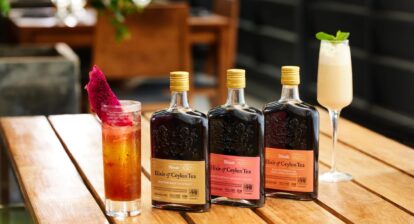Most tea drinkers are aware of the four main types of tea – black tea, green tea, oolong tea and white tea. However, what many don’t realise is that all these varieties come from the same plant, Camellia sinensis. The different tea types arise from differences in the way the plucked tea leaves are processed.



To understand this, let’s first take a look at how BLACK TEA is made. The two tender leaves and bud from the shoot are used for this traditional process. Once the plucked leaves reach the tea factory, they enter the age-old method of teamaking which involves:
- Withering – This reduces the moisture content of the leaves and initiates certain enzymatic chemical reactions.
Rolling – Here, the withered leaves are broken down to a suitable, desirable size and get macerated. More enzymes and substrates are released from the leaf, initiating some enzymatic reactions, such as the conversion of flavanols (catechins) to theaflavins and thearubigins which give the tea its brightness and ‘mouth feel’, respectively.
Fermentation – The rolled leaf, referred to as ‘dhool’, is spread out into thin layers (1.5 – 2 inches) on a fermentation table for about 2-3 hours for aeration (oxidation). Enzymatic reactions take place, leaf colour changes from green to black as chlorophyll is broken down, and volatile compounds that give the tea its aroma are formed.
Drying – Moisture content is reduced to around 3-4%, and a continued stream of hot air eventually stops enzymatic reactions in order to produce a stable end product.

Now, let’s look at a comparison between the processing methods for black, green, oolong and white teas.



As you can see, for green tea, steaming or pan firing is carried out in place of withering. The heat to which the leaves are exposed in this process eliminates enzymes that would have otherwise later catalysed the chemical reactions that convert the green leaf into black tea.



With oolong tea, the fermentation stage is either absent or carried out for a shorter time than with black tea, resulting in a tea that is somewhere between a black tea and a green tea. Longer fermentation would make it closer to a black tea, while shorter or no fermentation would make it more like a green tea.



White tea is a little more distinct, with (traditionally) only the bud being used for its production. Most of the original properties of the bud are preserved as processing is minimal, and the buds are naturally dried in the shade. This is the process used to produce Ceylon Silver Tips, which are derived from a special cultivar (a selectively bred variant of Camellia sinensis) that has larger buds, purple leaves and prominent leaf hairs. In the case of Ceylon Golden Tips, the buds are hand-rolled, causing the surface and hairs to be stained with the bud juice, and resulting in a golden hue after drying.






